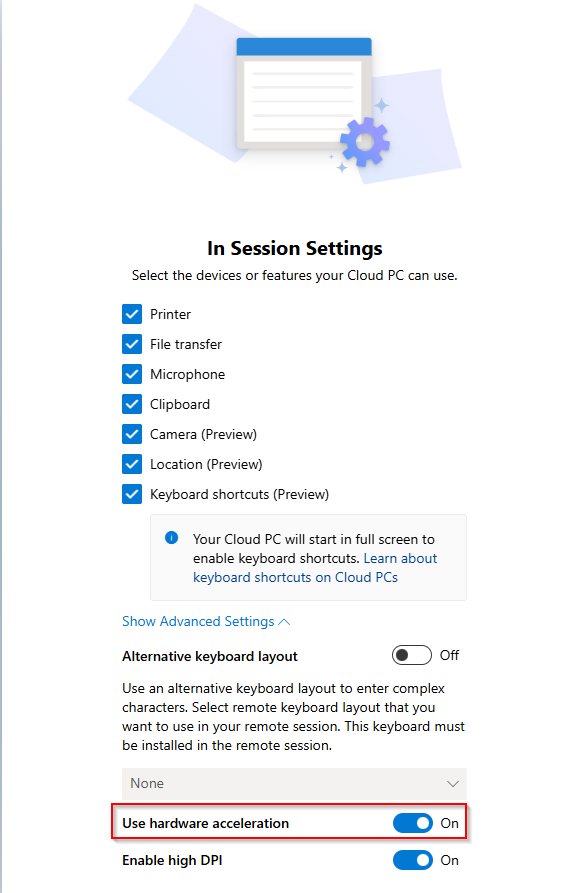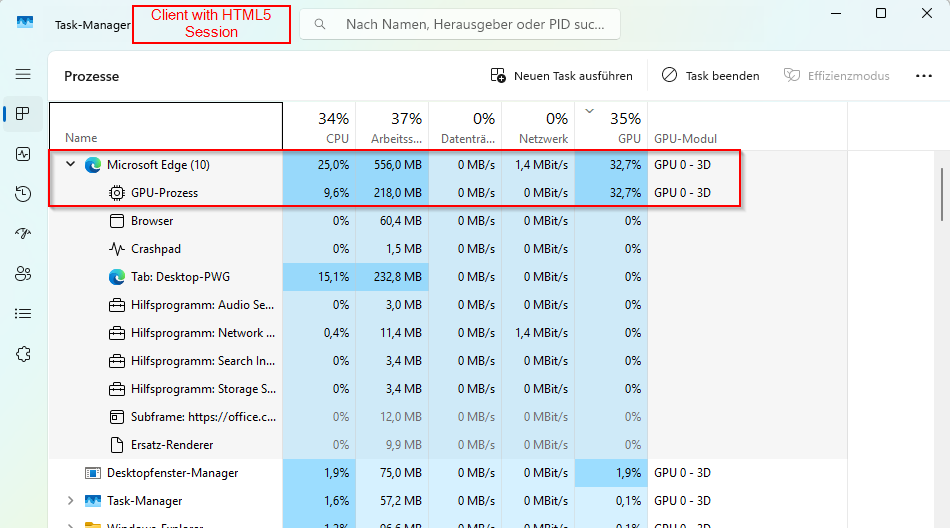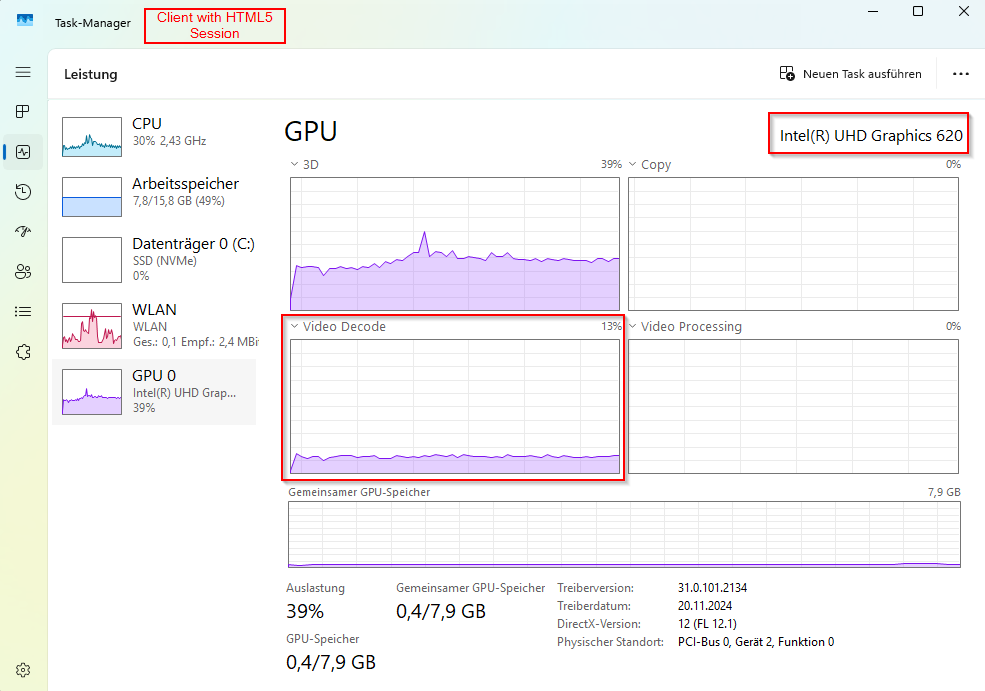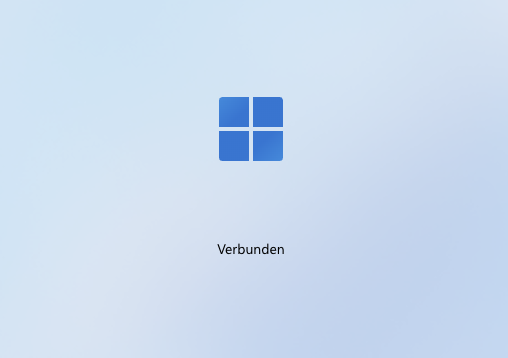Table of Contents
Overview
During a AVD vs AVD with Citrix HDX customer PoC at the end of last year, we’ve discovered some technical limitations for the AVD Web-Client (HTML5). I did a summary about that here (let’s call it Part one)
Now, Microsoft did the correct step to merge AVD and CloudPC Web-Portal to the new Windows App for Web – https://windows.cloud.microsoft and discontinued the support for the previous known AVD Web-Portal which is https://client.wvd.microsoft.com/arm/webclient/
This Post will cover some Updates (let’s call it Part two) of my previous one. Testing the new Windows App for Web within Codec, Performance and vGPU support on both AVD and CloudPC HTML5 Sessions.
Testing
I’m a primary Mac-User, for everything Windows I’m using Windows 365. But for that kind of testing, I needed a Windows (Hardware) Client.
I’ve decided to buy a refurbished Lenovo ThinkPad T490 Notebook – Windows 11 supported, Intel i5 CPU, 16 GB RAM, SSD, Intel UHD Graphics 620 (which is supporting HEVC H.265) which costs me 199€. That’s also a real business-case for my customers dealing at least with the Migration to Windows 11. Invest in cheap (but great quality!) refurbished hardware and get all the workload from AVD or Windows 365.
First of all, Microsoft did a great Job, supporting AVC (H.264) hardware encoding and decoding (when a GPU is available on the Cloud-Workload, decoding is rendered via vGPU, too) as the new default with the new Windows App for Web. You can also see that when downloading the HTML5 Report:

If your Browser isn’t supported for Hardware decoding, the line will look like that:
avcWebCodecDecodingEnabled: Browser Unsupported
Microsoft did a notice about that, starting with 15th of June:

During the connection, there’s the option to enable Hardware acceleration – along with some other cool improvements regarding local device redirections:

So during my first HTML5 Desktop-Sessions to a Windows 365 Enterprise GPU Max Cloud PC I verified Hardware encoding and decoding with success, also used by 60 FPS:

And the matching Task-Manager of my Windows 11 Client-Notebook, also using the integrated GPU for Video Decoding:


Measure the Data
To compare I’ve used my test-data from last year, where I’ve used an AVD host with vGPU on the old HTML5 Webportal.
1x 5:30 Min 4k 60 FPS Video, HTML5 Session Fullscreen (Edge on macOS), YouTube in Cinema-Mode:
| AVD HTML5 | CloudPC Windows App for Web | |
| Avg. FPS | 38,23 fps | 59,28 fps |
| Avg. Bandwidth Consumption | 15,93 Mbit/s | 14,14 Mbit/s |
| Avg. Round Trip Time (RTT) | 33,27 ms | 14,03 ms |
| Total Bandwidth Usage | 4,51 GB | 5,12 GB |
Do I have to say anything more? I think this comparison is a big step forward! I had nearly 100% Frame Quality, reaching constant 60 fps. Also big improvement in RTT, the Webclient is using TCP via RD-Gateway, there’s no support for UDP Shortpath, but gaining an average around 14 ms is massive (I’ve used a 1 GBit/s Business-Fibre internet connection for testing)
Summary
A further step forward, Microsoft’s providing a smooth user experience for those who don’t want (or aren’t able) to install the native Windows Client – both on Azure Virtual Desktop and Windows 365, doesn’t matter from which platform the enduser is connecting to.
Next Step: AV1 Codec to come!
